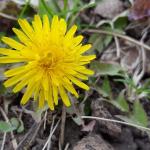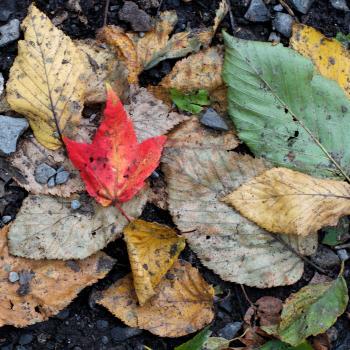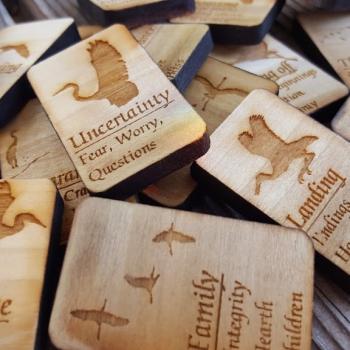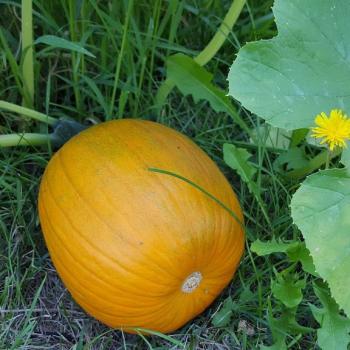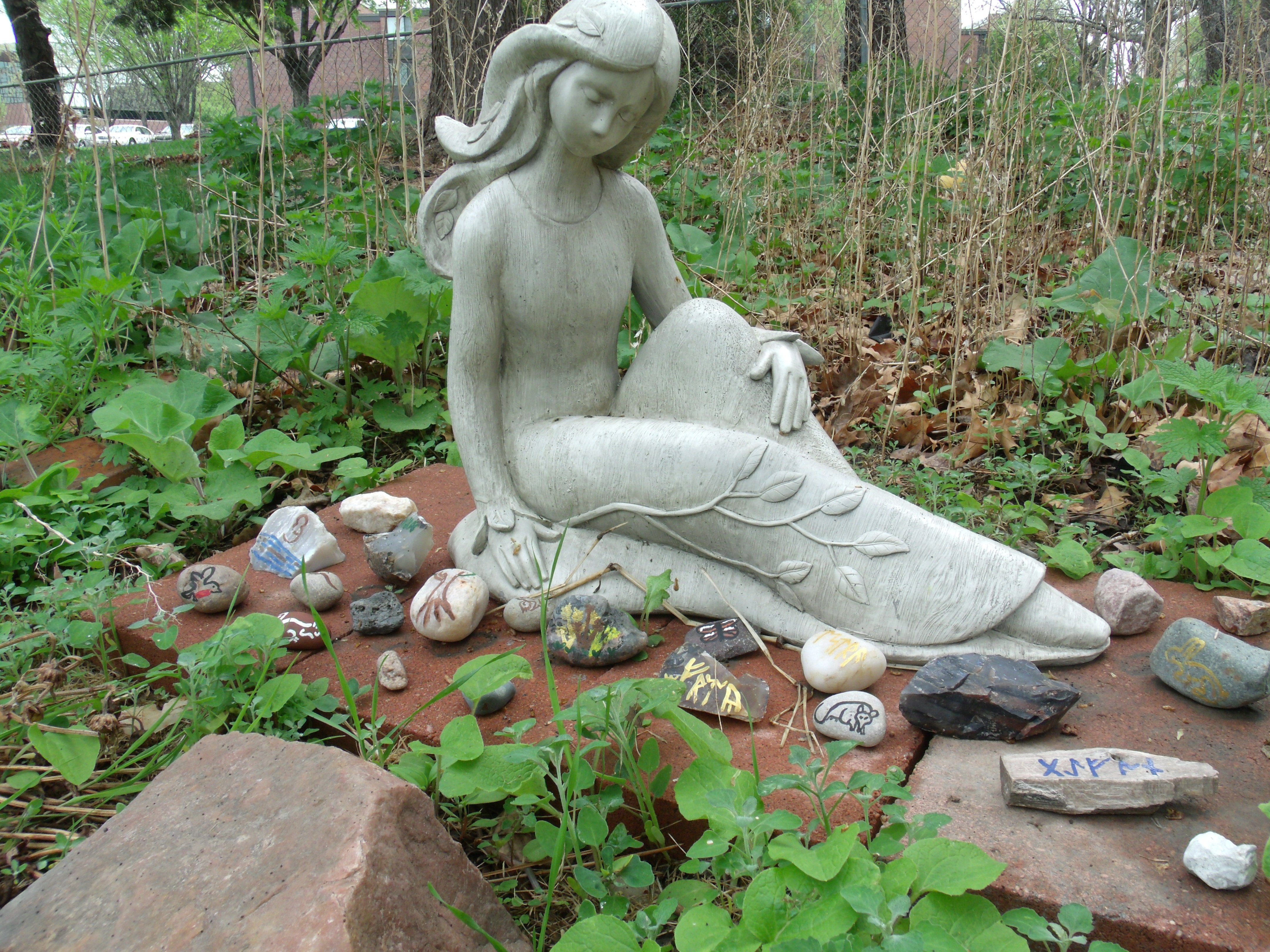 When I lived in a house a few years ago, I had a beautiful, expansive garden. It was home to my ducks and chickens, a bed of tiger lilies, and just about every herb and veggie you can grow in the Nebraska heat. It held an altar for Nerthus, Gerd, Aurboda, and a number of local spirits. It also featured an elaborate yearly sundial-like contraption that marked the solstices and equinoxes with gorgeous marble spheres. I spent about a year and a half putting it together, waking at dawn and coming out at dusk to mark the positions of shadows.
When I lived in a house a few years ago, I had a beautiful, expansive garden. It was home to my ducks and chickens, a bed of tiger lilies, and just about every herb and veggie you can grow in the Nebraska heat. It held an altar for Nerthus, Gerd, Aurboda, and a number of local spirits. It also featured an elaborate yearly sundial-like contraption that marked the solstices and equinoxes with gorgeous marble spheres. I spent about a year and a half putting it together, waking at dawn and coming out at dusk to mark the positions of shadows.
Obviously, not everyone has this luxury. Now I live in an apartment with a fairly small balcony. It’s not the same tamed wilderness environment with its organized chaos and wild spaces. I keep the altars up, though they don’t feel quite the same on slatted wood above a concrete parking lot. I have some pots I grow a few things in, but it’s certainly not every veggie or herb. It isn’t the sanctuary, or the time sink, that my old garden was.
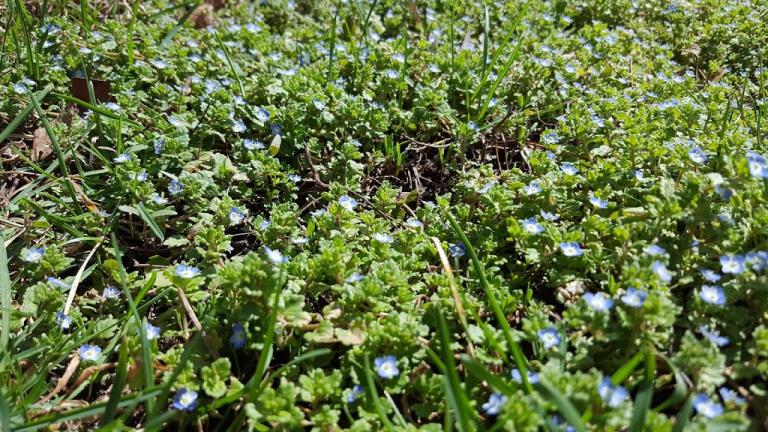 I know many of you are in the same boat. It’s hard to do a garden in very little space, and many have turned to community gardens and sharing spaces to answer that need. Though these are amazing resources, it does make it harder to practice your religion in a shared space. And honestly, it’s very difficult for me to separate “practicing my religion” from “gardening”.
I know many of you are in the same boat. It’s hard to do a garden in very little space, and many have turned to community gardens and sharing spaces to answer that need. Though these are amazing resources, it does make it harder to practice your religion in a shared space. And honestly, it’s very difficult for me to separate “practicing my religion” from “gardening”.
I am lucky enough to teach preschool in a nice location, and we have a decent outdoor space for growing plants and teaching children about the natural world. I’ve been planning this garden all winter. A pollinator area with local butterfly and bee attracting plants, herbs that will creep and take over the neglected beds so weeds won’t be such a problem. The usual staples: cherry tomatoes, bell peppers, strawberries. But as I’ve thought more about it, I’ve realized I can’t plant this garden without doing Pagan/Heathen things like thanking the spirits of the land or honoring each plant’s individual spirit.
So I’ve been contemplating how to do Pagan gardening stealthily. How do you create a spirit-lifting space without intruding on others or making them uncomfortable? Not that I believe anyone should tone it down for fear of scaring the “normies”, but I feel there’s something to be said for keeping overt religion out of public spaces. I wouldn’t love to go to my community garden patch and work next to a giant cross; and I guarantee lots of people would take issue with a huge, ornate pentacle or carving of the world tree. Especially since my stealthy garden is at my place of work, I don’t want it to look like a Pagan garden. 
Open and close your gardening sessions with prayer and offerings
Always address the spirits of the land around you and the plants you’re trying to cultivate before getting to work. It doesn’t have to be elaborate. A simple “hello, I’m here again to help these plants to grow. Thank you for allowing me to use this space. I brought (this) for you” would work. Consider your work an offering to the plants you’re growing, but plan to make other offerings to the wights of the place. Bring a pretty stone, clear water to pour on the grass or native plant life, or even a bit of compost to scatter about if you have some available.
Bury stones marked with meaningful symbols
I love sigil magic. But a big piece marked with clearly occult symbols is going to attract unwanted attention if you’re aiming for a stealthy garden. Four stones, collected from the area, can be painted with a bindrune calling for growth and life. Personally Jera and Berkana have always been effective for me. Once dry, they can be buried in the four corners of your plot to encourage its prosperity.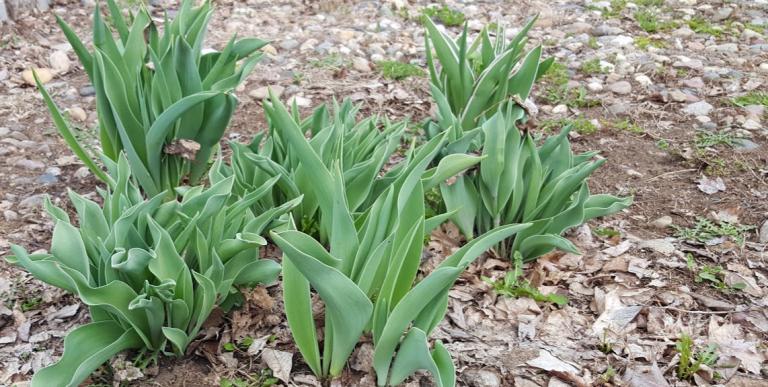
Build a fairy house
You can buy these, but creating your own is much more fun and encourages a connection with the land as you hunt for local materials. There’s lots of do-it-yourself tutorials floating around the internet to help you get started. They’re normal and cute enough to fly under the radar, but also make a welcoming place for local spirits to investigate.
Dedicate your garden to a deity
There are lots of Goddesses that are associated with the earth and with gardening in particular. Nerthus is of course a Germanic Earth Mother figure, granting prosperity and a good harvest. Gerd, the Jotun wife of Frey, has been etymologically linked to walled gardens. It’s a common shared personal gnosis that Aurboda, the mother of Gerd, is associated with healing herbs. You could also dedicate the plot to Jord, Thor’s giantess mother whose name literally means Earth.
These tips and tricks might not be exactly the same as a lavishly decorated, heavily Pagan or Heathen garden. But they can serve as a reminder to you that working with the land is an inherently spiritual exercise for religions that honor land spirits and earthy deities.


